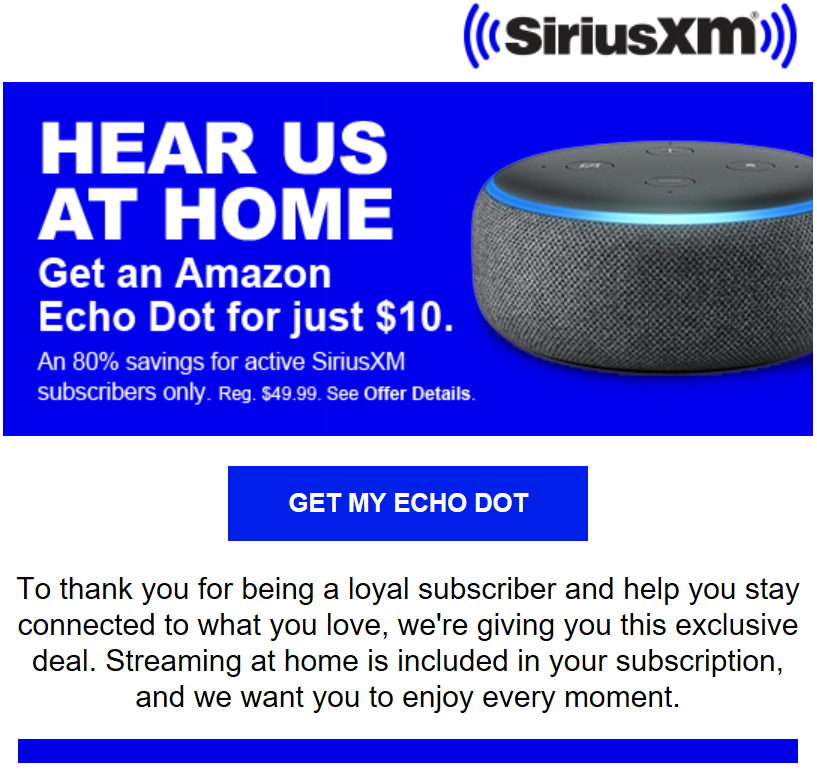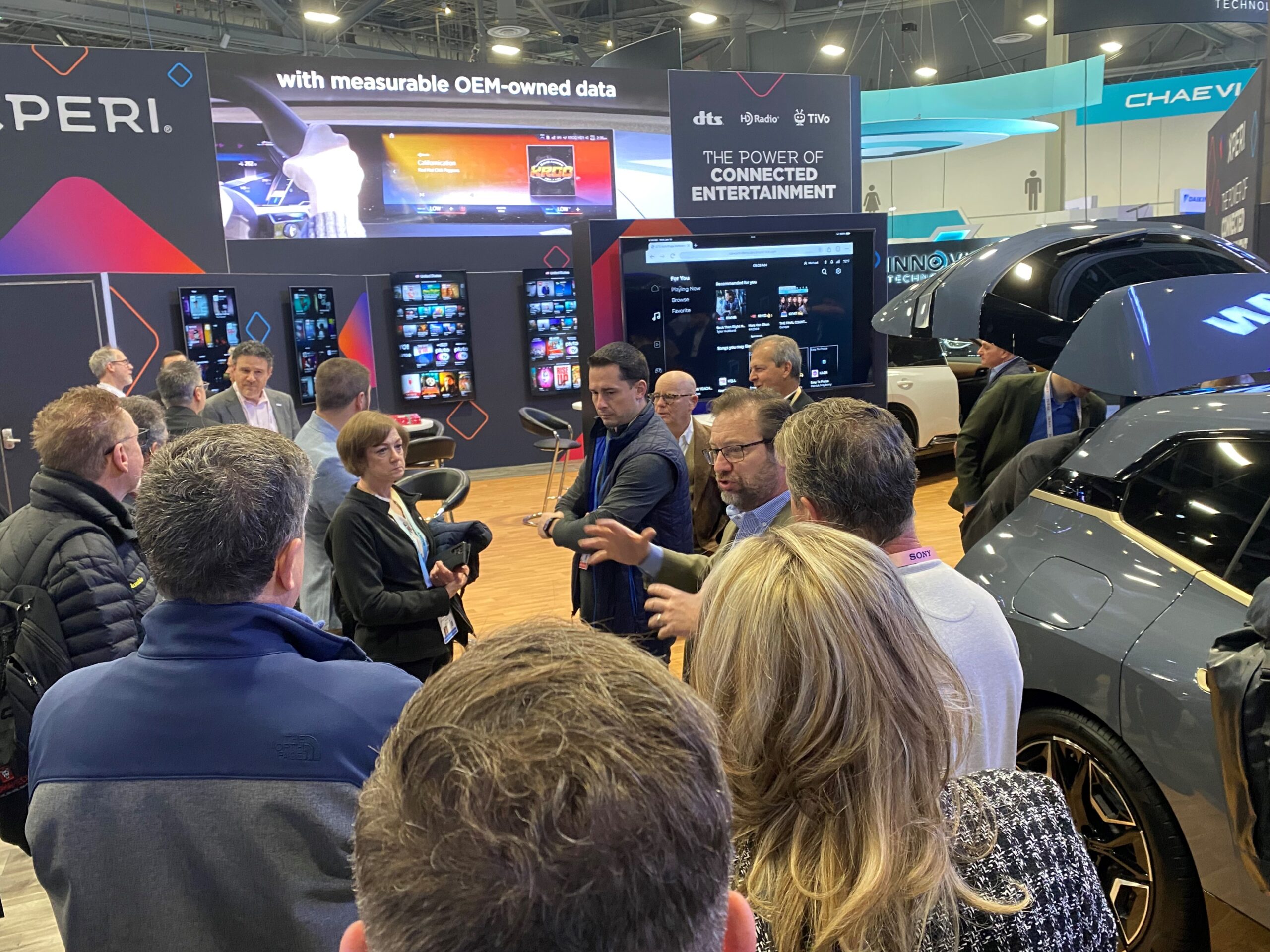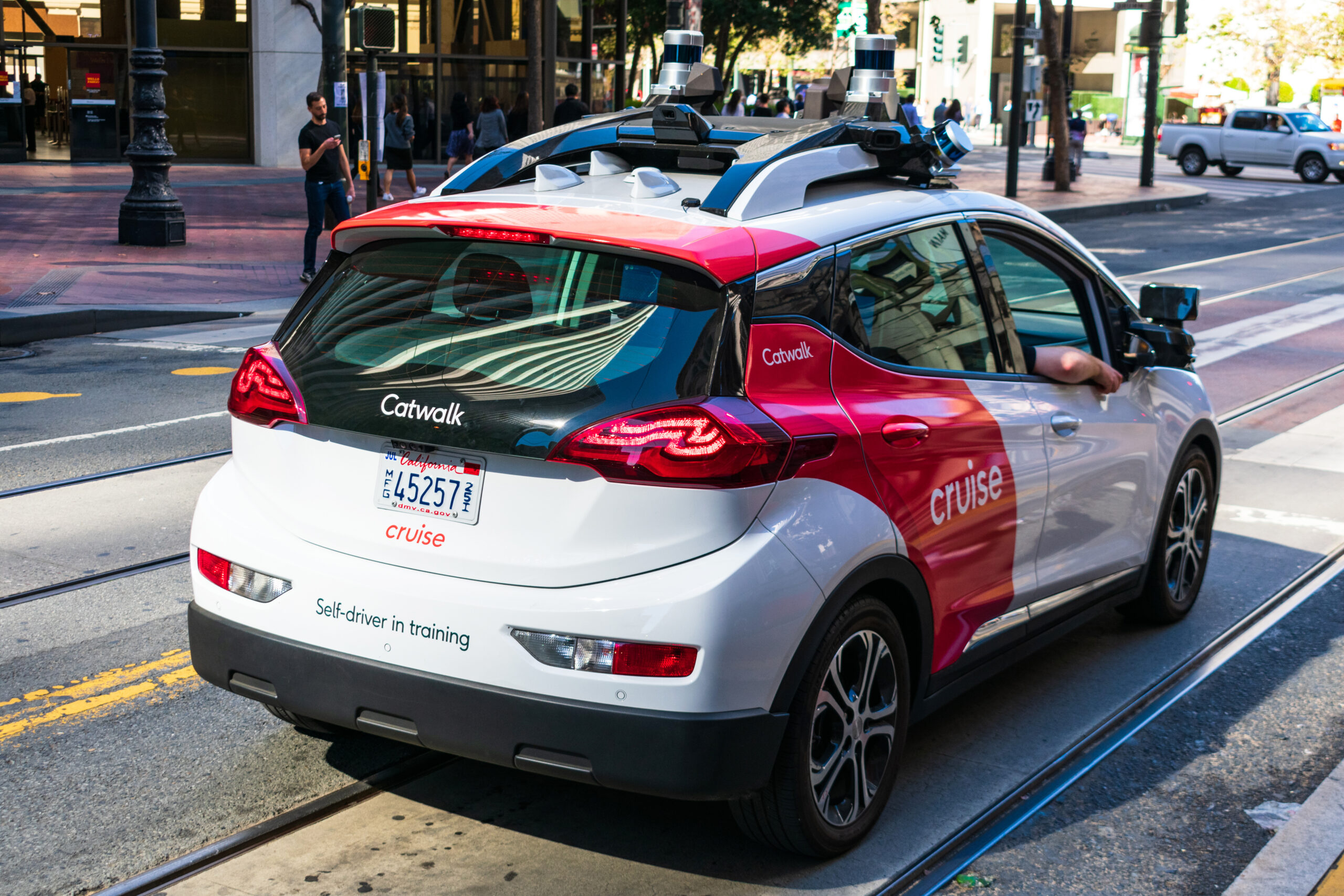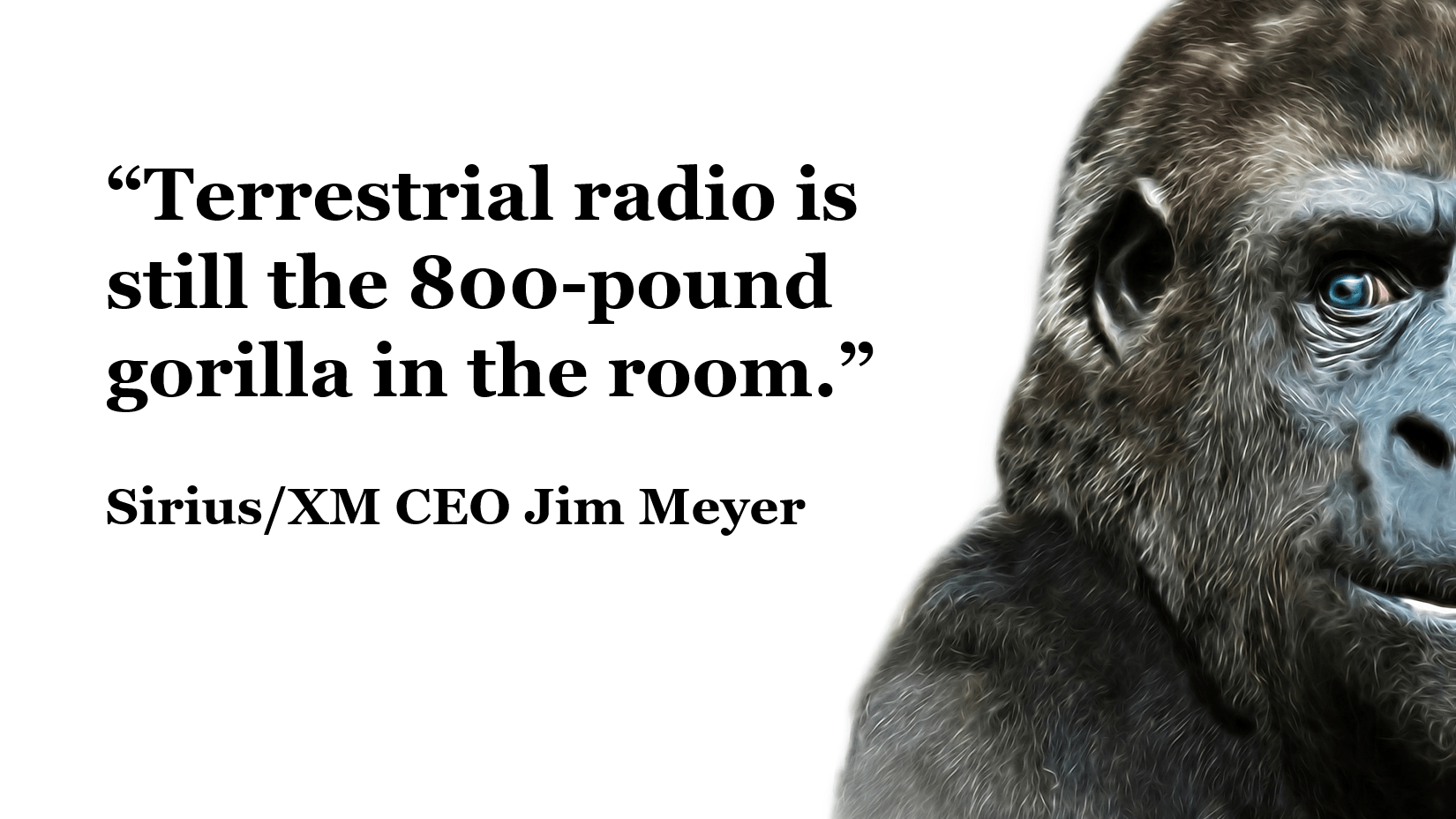
Less than a month before their CES 2025 keynote, SiriusXM has announced a major strategic pivot. It’s a gamble the world’s leading satellite radio network is willing to take in order to move the needle on subscribership and market share in the dynamic audio space.
It was just one year ago when SXM announced it was banking its fortunes on streaming, specifically via a new app. Over the years, the team at SiriusXM has invested heavily in podcasting, mobile, and streaming music especially via its purchase of Pandora.
But on Tuesday of this week came the announcement of a new COO, Wayne Thorsen, previously with ADT, Google, Microsoft, and Viacom. And the appointment coincided with a reversal of strategy – a return to a focus on in-car rather than streaming.
SXM’s CEO Jennifer Witz was amazingly candid in her assessment of her company’s failure to make its extensive mobile streaming strategy into a winner. Speaking at the UBS Global Media and Communications Conference in New York City, Witz came clean about SXM’s inability to turn its streaming initiative into a winner:
“The investments we’ve made over the last year or so after the launch of the (SXM) app in marketing for streaming customers have not produced the results that we were hoping for.”
Falling this fall on its strategic sword, Witz explained the company’s “new” idea is to return to its in-car listening concept. In other words, it means reverting to SXM’s natural audience – older adults:
“We were hoping to attract younger audiences through listening on the app or in other streaming devices, possibly even an in-car player.”
Much of the company’s efforts – especially over the past year – were spent on convincing consumers to access SXM at home or in other locations via various devices. Now, the dashboard is back in fashion for the satcaster.
fashion for the satcaster.
You can imagine when this moment must have occurred, like at a strategic off-site where someone stood up, gave the “We’ve got to get back to what brought us to the dance” monologue, and the nods from anxious attendees followed. Sirius (and then-competitor XM) got their starts in the dashboard, the place where new users have always first interfaced with the product. By returning to its roots strategy, SXM hopes to recapture its north star position as a better product when you’re behind the wheel.
 And again, CES might just be their (re)starting point. As we’ve learned by attending this show each year since 2009, the car has greatly advanced as a place where audio is consumed, both for entertainment and information. Many – including automakers, Tier 1 suppliers, and companies like DTS (Xperi’s parent) – hope video will follow.
And again, CES might just be their (re)starting point. As we’ve learned by attending this show each year since 2009, the car has greatly advanced as a place where audio is consumed, both for entertainment and information. Many – including automakers, Tier 1 suppliers, and companies like DTS (Xperi’s parent) – hope video will follow.
Each year, dashboard technology makes great strides and yet, SiriusXM has focused its efforts on listening in other locations via its mobile app and streaming. This new/old position re-centers the brand back to connecting with drivers and passengers of the millions of vehicles on the road.
An additional factor that may have been part of the new SXM calculus is that the idea of autonomous vehicles replacing passenger and industrial cars and trucks is so far off in the future it just won’t figure into strategic media plans for the next many years.
GM’s announcement it is throwing in the self-driving towel, shuttering its Cruise robotaxi initiative, reinforces the primacy of cars in our lives. And if you’re thinking that Gen Z’s would rather Uber everywhere, postponing their purchases of cars, you’re right.
primacy of cars in our lives. And if you’re thinking that Gen Z’s would rather Uber everywhere, postponing their purchases of cars, you’re right.
But what would stop SXM from partnering with Uber (and Lyft) to ensure their massive fleet of drivers has the ability to tune in SXM’s vast array of entertainment and information? Branded channels custom created for the Uber/Lyft experience could easily be created as well.
Make no mistake about it – autonomous is far from dead. In fact, GM says the Cruise division will merge with its self-driving efforts for personal vehicles, hoping it will catch the public’s collective imagination. Whatever the outcome, it is a reality well off in the future.
Sirius coming to its senses ahead of the Las Vegas tech fest is designed to position the satcaster as the dominant dashboard platform, ahead of the eroding AM and FM bands, already under fire by financially-conscious automakers. While broadcasters sweat out the “AM Radio For Every Vehicle Act,” SiriusXM is ramping up its efforts to make up ground in the battle for “real estate” in the center stack.
“Doubling down” on an older audience is, in fact, SXM’s sweet spot, making its appeal similar to broadcast radio’s core audience. The difference is that SiriusXM will gladly take subscription dollars from geriatrics above the age of 54 while terrestrial broadcasters continue to narrowly focus on the eroding 25-54 demographic.
Because our Techsurveys are conducted mostly among core AM/FM users, we can see just how much progress satellite radio has made – or hasn’t made – during the past several years. And as the chart below shows, SXM has barely chipped away at its terrestrial radio cousins.

Other data appears to support the new SiriusXM strategy. First of all, an estimated 70% of licensed drivers will be driving connected cars within three years, according to a recent EMARKETER study conducted this past fall. That breaks down to approximately 181 million drivers with the ability to access content via the web by 2028 – just around the corner.

This puts even more pressure on broadcast radio to remain relevant in the dash. And that brings to mind another recent study, this one from DTS, Xperi’s parent.
Overall, their research shows that just over six in ten consumers say AM/FM radio is a must-have feature in their cars and trucks:

If anyone realizes research is in the eye of the beholder, it’s me. But when I see this data point, it doesn’t strike me as especially impressive for broadcast radio. When you flip the number, 38% of respondents – nearly four in ten – can apparently get along just fine driving without AM/FM radio for information and entertainment, as well as the well-documented emotional benefits we track year after year in our Techsurveys, including companionship, mood elevation, and escape from the pressures of everyday life.
Speaking of Techsurvey, we’ve been doing a deeper dive into connected car owners – our definition is vehicles that include infotainment systems like Chrysler UConnect and Ford SYNC. Our data, conducted among mostly core radio listeners, shows that when consumers drive vehicles equipped with these systems, their AM/FM radio listening drops sharply while satellite radio subscribers increase:
![]()
So, radio broadcasters, what’s your move? And standing pat is not an option. That “non-strategy” has produced a steady drop of AM/FM consumption over the many years we’ve been conducting our Techsurveys. And keep in mind, our sample is comprised of people who are broadcast radio’s strongest and most reliable consumers.
And let’s not lose sight of the fact that while broadcast radio listenership drops when there’s a connected car in the driveway, satellite radio experiences a lift. What’s that about? It’s a phenomenon that has occurred every year. My theory is that most car makers offer a free trial of SiriusXM with the purchase or lease of a new vehicle. For many drivers (and passengers), it may be their first experience with satellite radio. Given the sheer number of commercial-free channels available, it’s not surprising there’s a boost in usage.
And while you can’t see tracking on the other pie chart above, the trend line on AM/FM radio consumption in cars (no matter how they’re equipped) is unmistakable – and alarming. With more options to choose from in their vehicles, consumers are taking advantage of content choice and variety.

While broadcast radio is still “king of the car,” its crown is tarnishing and most definitely slipping. When people pair their phones in their vehicles, the infotainment experience clearly shifts away from terrestrial radio.
So, what can broadcast radio do to stave off this trend? I could harp on the diminishing quality of AM and FM radio, but those discussions (OK, rants) are taking place every day on social media. Could local radio in most markets be more community focused, visible, and vital? Without a doubt, but we’re talking about quantum shifts in strategy designed to move all those strategic “boulders” now in the way.
And then there’s the commercial load problem, yet another barrier to more listening. Yes, AM/FM radio is “free,” but the UX – the user experience – has long been compromised by bloated commercial loads and other excesses.
If radio is looking to do at minimum, the little things – the basics – to at least improve its position in the dash, metadata is a constructive and effective place to start.
 JacoBLOG readers, clients, and friends know we’ve long been on this bandwagon, starting with our consulting work and subsequent dashboard audit conducted for the NAB in 2017. (You can get the updated version free here, whether you’re an NAB member or not.)
JacoBLOG readers, clients, and friends know we’ve long been on this bandwagon, starting with our consulting work and subsequent dashboard audit conducted for the NAB in 2017. (You can get the updated version free here, whether you’re an NAB member or not.)
And most of you know about our association with Quu, the “metadata mavens.” Steve Newberry is the CEO, and you can’t ask for a more experienced broadcaster at the helm of a mission to improve the way radio looks in car. Steve has owned small market radio stations on the one hand, and has served as Executive VP at the NAB on the other.
In metadata, radio has the opportunity to be competitive with how streaming audio, podcasts, and yes, satellite radio look on the dash. In fact, with a little creativity and real-time thinking, broadcast radio’s use of metadata could provide greater immediacy, localism, and relevance for broadcast stations. There are also revenue-generating opportunities, too.

Once again, we’ll use our upcoming Techsurvey 2025 to learn more about the most desirable in-dash content – by format, demographic, and individual station brands. (Registration/info for TS25 is at the end of today’s post.)
Whether overtly or subtly, drivers pay attention to their dashboard screens and metadata messaging. When broadcast radio looks good and in the moment, all boats rise. But when AM and FM stations aren’t competitive or timely, it sends out a message broadcast radio is detached, disconnected, and ambivalent – all bad qualities for media brands, especially in an increasingly competitive environment.
We often think about dashboard metadata as mostly a commercial radio initiative, but public and Christian radio stations could help themselves – and their industry – with a more concerted effort and a greater investment in this technology, too. I have presented at umpteen events in both of these radio communities to broadcasters who simply haven’t made the priority it should be. For AM/FM to look, sound, and work better on the road, everyone needs to get with the program.
and a greater investment in this technology, too. I have presented at umpteen events in both of these radio communities to broadcasters who simply haven’t made the priority it should be. For AM/FM to look, sound, and work better on the road, everyone needs to get with the program.
As SiriusXM attempts to reposition and reinvent itself yet again, we will continue to track their progress (or lack of it) in Techsurvey. From the point in time Howard Stern exited FM radio to join Sirius 19 years ago next month, we’ve watched its fortunes shimmy and shift. Whether they’re onto a winning strategy or not, we’ll continue to keep an analytical eye on their impact on broadcast radio, its primary competitor and barrier to success.
The company’s previous CEO, Jim Meyer, told Wall Street on a 2016 investor call that AM/FM radio presented its best competitive opportunity:

This new strategic plan is a return to that focus on broadcast radio, now down to more like 500 pounds, but still a big target for SXM. If they’re redoubling their efforts in the car, that translates renewed competition for attention, time, and loyalty against AM/FM.
However you assess the wisdom of their plan, they’re not standing pat. You don’t pay for a keynote at CES and then promise more of the same. It’s a clarion call to broadcasters of all stripes to be on top of their changes during the upcoming rollout.
Set your alarm. It’s time to wake up.
Jacobs Media will be out in force at CES 2025 next month in Las Vegas. SXM’s Jennifer Witz will host a keynote and we’ll be covering it as it happens. Watch for our reports in Inside Radio. There are still a limited number of slots for our second CES tour. Info here.
And there are still a few more days left to sign up as a participating stakeholder for Techsurvey 2025, the smartest move you can make in Q1. Info here. – FJ
Originally published by Jacobs Media





